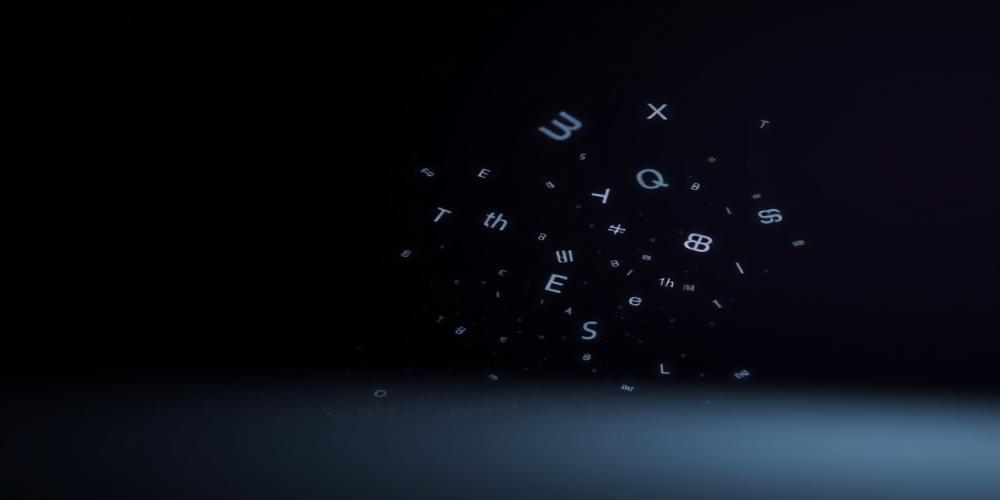Understanding Invisible Character Prompts: The Hidden Power of Empty Spaces
Introduction to Invisible Character Prompts
In the digital world where every character counts, invisible characters play a fascinating yet often overlooked role. These seemingly empty spaces, zero-width characters, and hidden formatting elements can significantly impact how text is processed, displayed, and manipulated. This article explores the concept of invisible character prompts, their types, applications, and best practices for leveraging their power.
What Are Invisible Character Prompts?
Invisible character prompts refer to the use of non-visible characters or formatting elements to trigger specific behaviors, processes, or outputs in digital systems. Unlike visible characters that occupy space on the screen, these hidden elements can influence text processing, form validation, data parsing, and even security measures.
The Science Behind Invisible Characters
At their core, invisible characters are Unicode code points that don't render as visible symbols. These characters include zero-width spaces, non-breaking spaces, byte order marks, and various control characters. When used intentionally in prompts or inputs, they can serve specific purposes without altering the visual appearance of the text.
Types of Invisible Characters
Zero-Width Characters
Zero-width characters are perhaps the most commonly known invisible elements. These include:
- Zero-width space (U+200B)
- Zero-width non-joiner (U+200C)
- Zero-width joiner (U+200D)
- Zero-width no-break space (U+FEFF)
Whitespace Characters
While some whitespace characters are visible (like tabs and line breaks), others function invisibly:
- Non-breaking space (U+00A0)
- En space (U+2002)
- Em space (U+2003)
Control Characters
These characters were designed to control text processing rather than appear as symbols:
- Carriage return (CR) and line feed (LF)
- Null character (U+0000)
- Backspace character
Applications of Invisible Character Prompts
Watermarking and Copyright Protection
Authors and content creators can embed invisible characters in their text as a form of digital watermarking. These hidden markers can later be detected to verify authorship or detect unauthorized copying.
Stealth Communication
Invisible characters can be used to hide messages within visible text—a technique known as steganography. By strategically placing zero-width characters, users can encode information that remains invisible to casual readers but can be extracted with the right tools.
Form Validation and Input Processing
Web developers sometimes use invisible characters to validate form inputs or control how data is processed. For example, a zero-width character might be used to separate fields in a single input line or to enforce specific formatting requirements.
Best Practices for Using Invisible Character Prompts
Consistency in Implementation
When using invisible characters for a specific purpose, maintain consistency in your approach. Document which characters you're using, where they're placed, and how they should be processed.
Testing Across Platforms
Not all systems handle invisible characters uniformly. Test your implementations across different platforms, browsers, and applications to ensure consistent behavior.
Consider Accessibility Implications
Be mindful that invisible characters can affect screen readers and other assistive technologies. Use them judiciously and consider alternatives when they might hinder accessibility.
Potential Pitfalls and Solutions
Unexpected Display Issues
Problem: Invisible characters can sometimes cause unexpected formatting or display issues.
Solution: Use proper validation and testing to ensure invisible characters don't disrupt the intended display or functionality.
Compatibility Challenges
Problem: Different systems may handle invisible characters differently, leading to inconsistent behavior.
Solution: Choose widely supported invisible characters and provide fallback mechanisms for systems that don't handle them properly.
Security Concerns
Problem: Malicious actors can exploit invisible characters for attacks like injection or spoofing.
Solution: Implement proper input sanitization and validation to detect and handle potentially problematic invisible characters.
Conclusion
Invisible character prompts represent a fascinating intersection of text processing and hidden functionality. When used thoughtfully, these invisible elements can enhance watermarking, enable stealth communication, and improve input processing. However, they also come with challenges related to compatibility, accessibility, and security.
As digital systems continue to evolve, understanding and leveraging invisible characters will become increasingly important. By following best practices and being aware of potential pitfalls, developers and content creators can harness the power of these hidden elements to create more sophisticated and resilient digital experiences.










